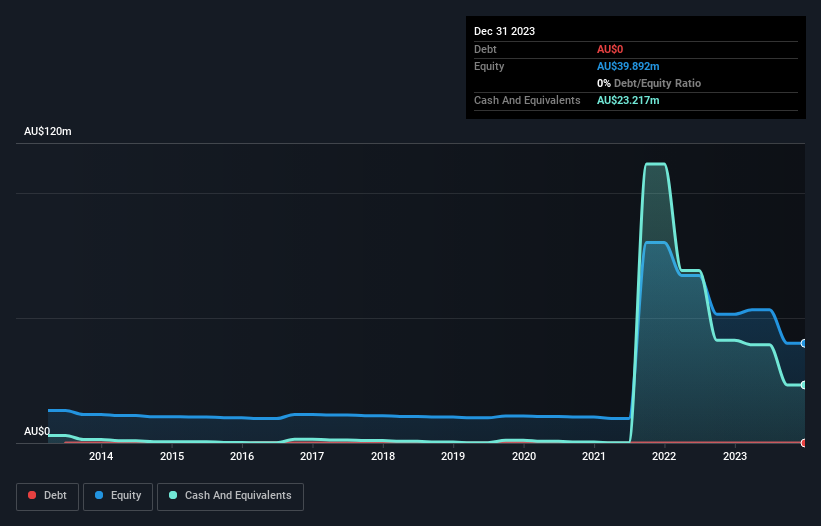We Think Red Hill Minerals (ASX:RHI) Can Easily Afford To Drive Business Growth
Even when a business is losing money, it's possible for shareholders to make money if they buy a good business at the right price. For example, although Amazon.com made losses for many years after listing, if you had bought and held the shares since 1999, you would have made a fortune. Having said that, unprofitable companies are risky because they could potentially burn through all their cash and become distressed.
So should Red Hill Minerals (ASX:RHI) shareholders be worried about its cash burn? For the purpose of this article, we'll define cash burn as the amount of cash the company is spending each year to fund its growth (also called its negative free cash flow). Let's start with an examination of the business' cash, relative to its cash burn.
View our latest analysis for Red Hill Minerals
When Might Red Hill Minerals Run Out Of Money?
A company's cash runway is calculated by dividing its cash hoard by its cash burn. As at December 2023, Red Hill Minerals had cash of AU$23m and no debt. Looking at the last year, the company burnt through AU$4.9m. That means it had a cash runway of about 4.7 years as of December 2023. A runway of this length affords the company the time and space it needs to develop the business. You can see how its cash balance has changed over time in the image below.

How Is Red Hill Minerals' Cash Burn Changing Over Time?
While Red Hill Minerals did record statutory revenue of AU$1.3m over the last year, it didn't have any revenue from operations. To us, that makes it a pre-revenue company, so we'll look to its cash burn trajectory as an assessment of its cash burn situation. From a cash flow perspective, it's great to see the company's cash burn dropped by 89% over the last year. While that hardly points to growth potential, it does at least suggest the company is trying to survive. Admittedly, we're a bit cautious of Red Hill Minerals due to its lack of significant operating revenues. We prefer most of the stocks on this list of stocks that analysts expect to grow.
How Easily Can Red Hill Minerals Raise Cash?
There's no doubt Red Hill Minerals' rapidly reducing cash burn brings comfort, but even if it's only hypothetical, it's always worth asking how easily it could raise more money to fund further growth. Issuing new shares, or taking on debt, are the most common ways for a listed company to raise more money for its business. Commonly, a business will sell new shares in itself to raise cash and drive growth. By comparing a company's annual cash burn to its total market capitalisation, we can estimate roughly how many shares it would have to issue in order to run the company for another year (at the same burn rate).
Red Hill Minerals' cash burn of AU$4.9m is about 1.4% of its AU$353m market capitalisation. That means it could easily issue a few shares to fund more growth, and might well be in a position to borrow cheaply.
How Risky Is Red Hill Minerals' Cash Burn Situation?
As you can probably tell by now, we're not too worried about Red Hill Minerals' cash burn. For example, we think its cash burn reduction suggests that the company is on a good path. And even its cash burn relative to its market cap was very encouraging. After considering a range of factors in this article, we're pretty relaxed about its cash burn, since the company seems to be in a good position to continue to fund its growth. Taking an in-depth view of risks, we've identified 1 warning sign for Red Hill Minerals that you should be aware of before investing.
Of course Red Hill Minerals may not be the best stock to buy. So you may wish to see this free collection of companies boasting high return on equity, or this list of stocks that insiders are buying.
Have feedback on this article? Concerned about the content? Get in touch with us directly. Alternatively, email editorial-team (at) simplywallst.com.
This article by Simply Wall St is general in nature. We provide commentary based on historical data and analyst forecasts only using an unbiased methodology and our articles are not intended to be financial advice. It does not constitute a recommendation to buy or sell any stock, and does not take account of your objectives, or your financial situation. We aim to bring you long-term focused analysis driven by fundamental data. Note that our analysis may not factor in the latest price-sensitive company announcements or qualitative material. Simply Wall St has no position in any stocks mentioned.
